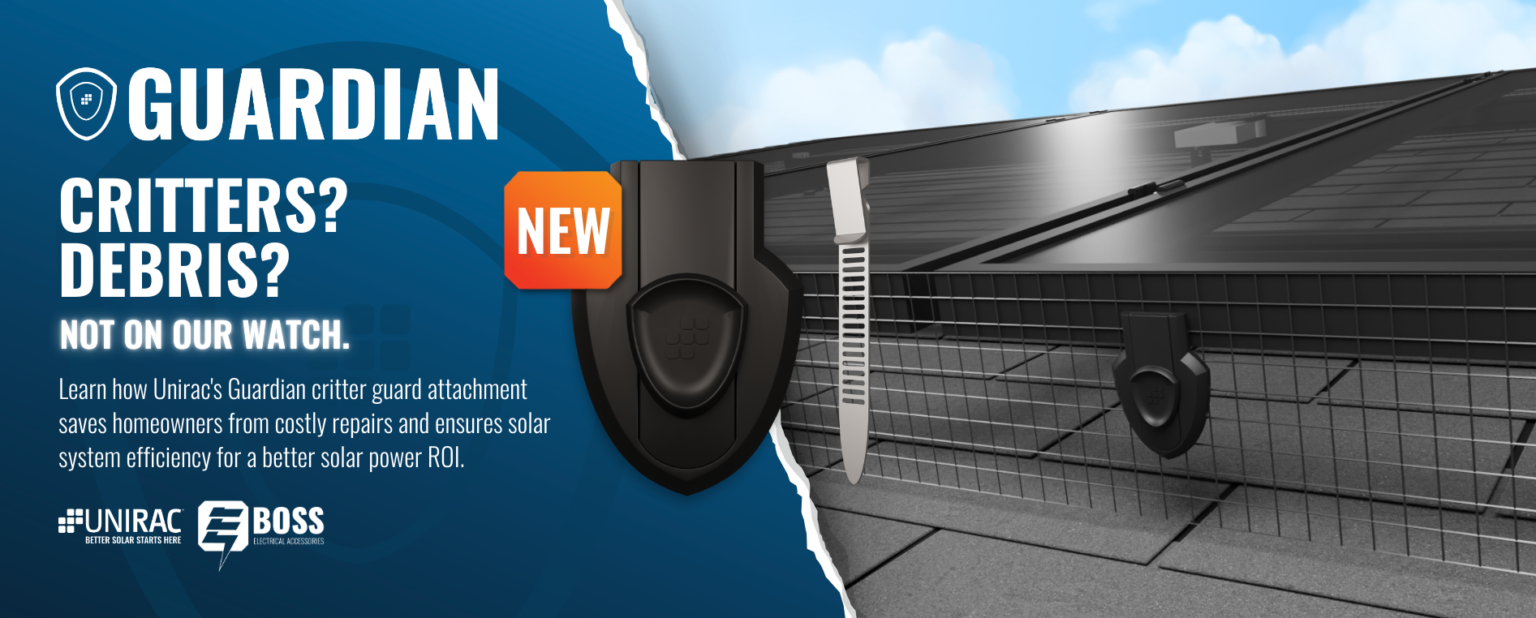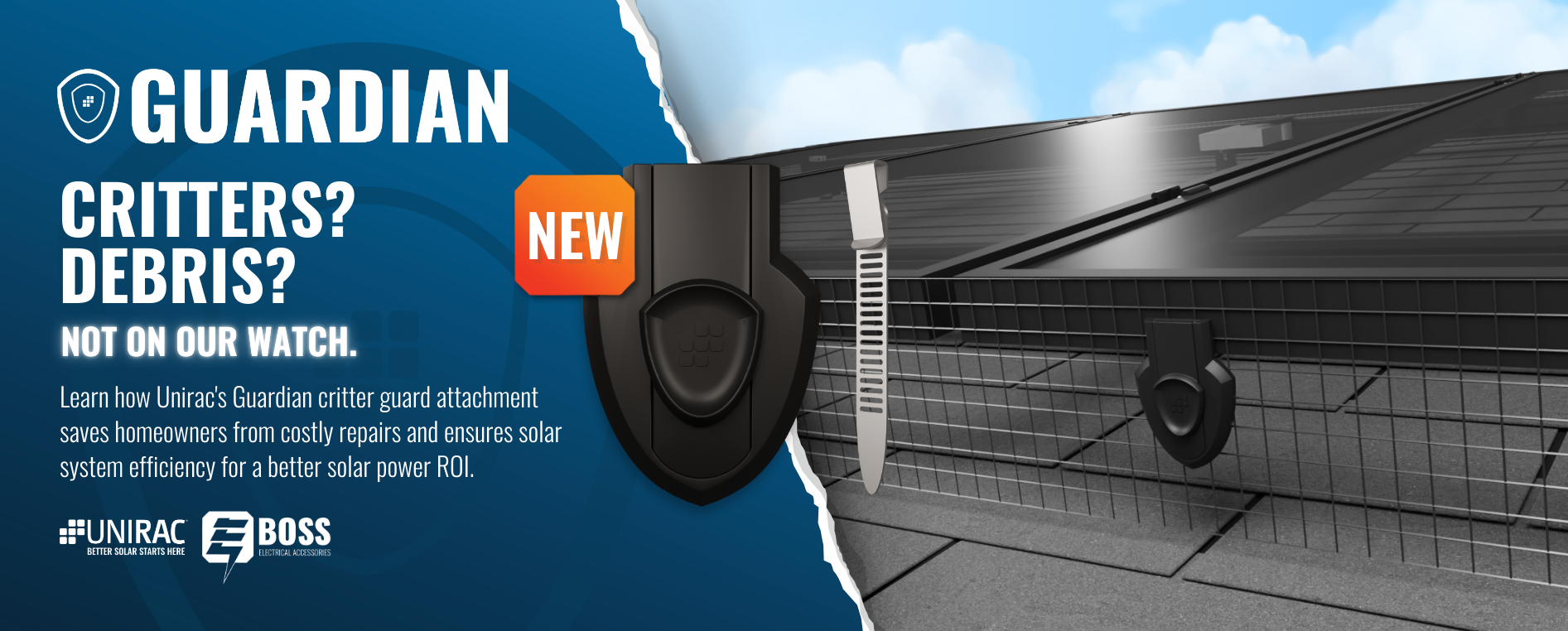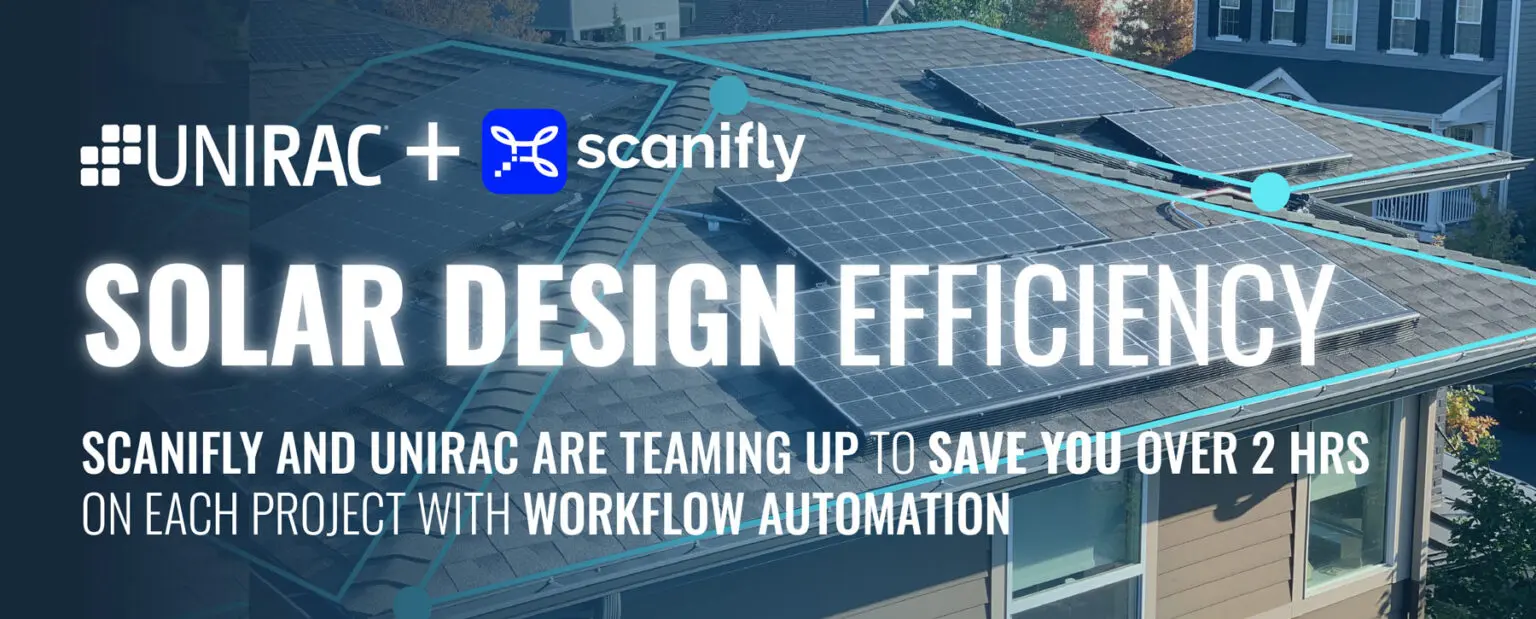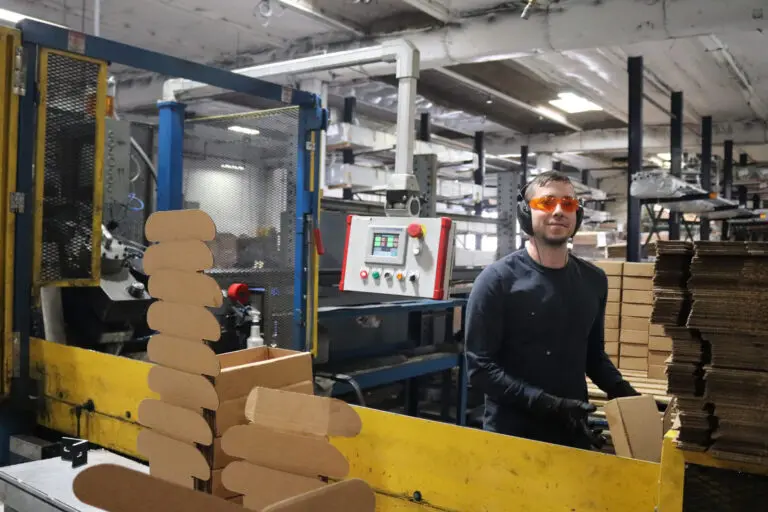Critters—an Overlooked Threat to Solar Efficiency & Longevity
SHARE THIS:

Adopting solar energy is a significant investment for homeowners, requiring careful evaluation of system efficiency, energy output, and long-term financial benefits. Every decision—from choosing the right panel technology to optimizing placement for maximum sunlight exposure—plays a crucial role in ensuring a cost-effective solution that remains reliable for years to come. In 2025, the projected cost for a standard 7.2-kilowatt residential solar installation is $21,816. The situation improves after factoring in the federal tax credit, with the total out-of-pocket cost falling to $15,271. A properly installed and maintained solar system is expected to break even in 12 years, delivering a strong return on investment—provided it operates at peak efficiency without significant operational or maintenance disruptions that could extend the payback period.
To maintain this efficiency and protect the long-term viability of the system, homeowners must account for proper maintenance and potential risks that could impact solar performance. One often-overlooked challenge comes from an unexpected source: local wildlife. While most renewable energy enthusiasts appreciate nature, animals getting too close to a solar system can cause serious issues. Critters—birds, rats, squirrels, and even raccoons—can chew through wiring, nest under panels creating blockages, or loosen connections, leading to performance drops and ongoing maintenance headaches. Failure to address these risks could result in expensive repairs or, in some cases, system failure, which significantly undermines the financial return on the installation.
Critter Protection Directly Correlates with Solar System Longevity
Many homeowners and installers fail to recognize the significant risk posed by local wildlife, which can cause extensive damage to solar panels and critical system components. Although often underestimated, wildlife-related damage is costly to repair, reduces efficiency, and, if left unaddressed, significantly shortens the solar system’s lifespan. This, in turn, extends the operational time needed to recover the original investment, ultimately undermining the overall value derived from the system.
Though it may seem counterintuitive, solar installations are an attractive environment for critters. The sheltered space beneath solar panels offers birds, like pigeons, an ideal place to roost and nest, while teething rodents such as squirrels and mice are naturally drawn to the insulation coating on the wiring. Critters not only damage the physical components by chewing on wires or creating nests, but their activity also introduces other risks. The debris they gather in the process—twigs, leaves, feathers, and fur—can obstruct airflow beneath the panels, impacting ventilation and causing panel overheating. Given that solar panels can already reach temperatures of 149°F (65°C) or more on a sunny day, this lack of ventilation reduces efficiency, contributes to premature wear, and can create significant fire hazards on the homeowner’s rooftop.
The consequences of animal interference go beyond immediate damage. The constant movement of birds and small animals can loosen panel wiring, leading to system-wide failures. These failures can render parts of the installation nonfunctional or inefficient, diminishing overall energy yield. These malfunctions add to maintenance costs and challenges, making solar energy less appealing for homeowners. Additionally, bird droppings, which are corrosive in nature, can cause permanent damage to the surface of the panels when left to bake in the sun.
While it is easy to assume that instances of animal activity around the solar array are negligible, they significantly affect solar production. A report from the National Renewable Energy Laboratory revealed an average 28% loss in production during the year when an animal-related event occurred. Another study found that bird droppings have the greatest impact on panel efficiency, accounting for 46% to 89% of efficiency loss in solar panels. Aside from damage to the system, the list of collateral damage, risks such as electrocution hazards, roof rot, damage to roofing materials, and water damage can complicate matters further. The problem becomes even more pressing when considering that damage caused by pests is generally not covered under the standard homeowner’s insurance or solar manufacturer warranty.
The Economic Case for Investing in Critter Guards
Critter guards are protective barriers, typically made of wire mesh or specialized plastic, installed around the solar array. They block entry points and keep wildlife from accessing vulnerable areas beneath the panels.
When it comes to solar installations, though the long-term benefits—such as reduced energy bills and a positive environmental impact—are widely recognized, the initial investment often remains a key consideration for potential customers. This is why investing in critter guards may seem like an additional expenditure to homeowners who have already assumed the cost of a PV system. However, the price of installing critter guards is minimal relative to the potential financial impact of damage. Adding these protective measures upfront is a fraction of the expense required to repair damages later, potentially saving thousands on unnecessary repairs.
Detecting signs of wildlife activity beneath a solar array, such as debris buildup or even a drop in system performance, signals a potential threat, leaving aside the worst-case scenario of a fire that could take out a panel or spread across the roof. In this case, the homeowner would need to call a separate company to remove panels, clean the system, and possibly replace damaged components like chewed wires or frayed conductors. Since critter guards weren’t installed initially, the cost at this stage would be added to the overall repair expenses. Installing critter guards after evidence of damage is much more costly than taking it as a proactive measure.
The longevity and performance of a solar system are directly tied to how well it is maintained. The longer a solar system lasts without significant issues, the more valuable it becomes as an investment—solar panels that function at their best will produce more energy over time, allowing homeowners to realize the full economic potential of solar energy.
Supporting Sustainability Through Fewer Repairs, Longer System Lifecycles, & Reduced Waste
Protecting a system from any possible interference right away makes good financial sense, and the decision to implement critter guards is a strategic one that offers far more than just adding economic benefits. Mitigative measures like these contribute to a more sustainable solar industry, ensuring that solar systems function efficiently over a longer lifespan. Extending system longevity means reducing the frequency of repairs and replacements, which translates to fewer materials wasted, fewer components discarded, and fewer replacement parts produced.
A key factor in the solar industry’s success depends on its ability to deliver not just energy but also products and services that reflect its commitment to sustainability. Therefore, it is more about ensuring long-term performance and returns than avoiding costly repairs—embracing a proactive approach in a sustainability-focused market will work toward building trustworthy and more enduring customer relationships.
The Value Proposition for Homeowners & Solar Customers:
Cost savings on repairs and maintenance – With critter protection in place, homeowners avoid the often-high costs of emergency repairs, which can cost anywhere between $228 and $1,501, such as damaged wires or replacements, which can include expensive parts like inverters or panels.
Peace of mind for homeowners – Homeowners want assurance that their systems will perform reliably without unexpected breakdowns or hidden costs. Installing critter guards provides peace of mind, ensuring that the solar investment will continue to operate at peak efficiency and that energy bills remain low.
Choose an Installer Who Supports Critter Guards:
When selecting a solar installer, it is better to prioritize those who offer critter guard solutions as part of their comprehensive service. Homeowners should seek installers who not only understand the technical aspects of solar system installation but also recognize the long-term value of protecting the system from damage. Solar installers are uniquely positioned to provide additional value to their customers by embracing mitigative solutions as part of the installation process. A qualified installer who includes critter guards demonstrates a commitment to safeguarding the solar investment while ensuring the installation’s reliability.
Unirac’s Innovative Solution Simplifies Critter Guard Installation
As a solar racking company with over 25 years of experience in the industry, we have developed a unique understanding of the US solar market’s needs and a knack for product development. We know that every component of a solar installation has its place and role, including the often-overlooked element like critter guard, which protects costly components and ensures system longevity.
In practical terms, a solar array without a critter guard is left exposed to unnecessary risks, especially given that solar systems are expected to operate for 30 years or more. However, as with any other component, critter guards are effective only if installed correctly. Traditional methods for installing critter guard protection typically involve tedious labor, non-reusable parts, and greater complexity, all of which add cost.
Currently, two main methods exist for installing critter guards: adhesive and clip-based products that attach to the module frame. Both, however, come with inherent limitations—adhesive-backed guards, though quick to install, have temperature tolerances and cannot be reused if the system needs servicing or adjustments down the line. On the other hand, clip-based systems are tedious to install and may loosen over time (since they are held by friction for their components), needing more units attached in close proximity, adding cost and compromising their effectiveness. Unsatisfied with any solution that checks all the boxes, Unirac envisioned a product that simplifies installation, reduces labor, and holds strong for a long time: Guardian.
The Guardian attachment streamlines the process with just two components: a reusable metal clip and a plastic cap. This design focuses on effortless, tool-free installation that integrates seamlessly with the solar array. Compatible with all major pitched roof racking systems and solar modules, it allows for easy, precise installation in just three steps—clip, cover, and cap.
What sets Guardian apart is its long-term functionality. The product is designed with adjustments and maintenance in mind, so there is no need to worry about frequent replacements. Combining durability, aesthetics, reusability, and a tight, secure fit, Guardian ensures that critter guards are installed securely and reliably.
Accounting Critter Damage Equates to Scaling Solutions for Residential Markets
Accounting for critter damage is a smart strategy for homeowners, solar installers, and companies looking to scale their operations, particularly in the residential market. Scaling mitigative solutions as a standard part of the service means that solar companies can tap into a broader market that appreciates their installers thinking ahead for their sake and protecting their solar energy investment.
Incorporating simple, cost-effective solutions like Unirac’s Guardian allows companies to meet customer needs more effectively, differentiating themselves in service quality and sustainability. As residential solar installations become more widespread, offering to incorporate critter guard protection into the design and installation process will help address a concern while safeguarding the interests of all involved parties. It is an approach that saves money, future-proofs services, and enhances the overall value of solar energy.







 great market opportunity to supply customers with quality American-made products for solar projects. As a leading manufacturer of solar racking and mounting systems, we have made it our mission to ensure that our customers receive the best products and are excited to assist you in creating your optimal, viable solar project.
great market opportunity to supply customers with quality American-made products for solar projects. As a leading manufacturer of solar racking and mounting systems, we have made it our mission to ensure that our customers receive the best products and are excited to assist you in creating your optimal, viable solar project. 

